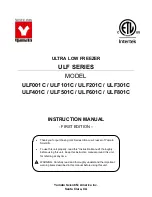
28
29
Eng
li
sh
Eng
lish
6 Installation
6.1 Positioning
The appliance should be located in a well ventilated and dry room.
The ambient temperature affects the power consumption and correct
function of the appliance.
Sufficient air circulation on the rear wall and upper edge of the appliance
must be guaranteed. For optimal ventilation of the appliance the minimum
ventilation crossections must be observed: i.e. position the refrigerator at
least 100 mm away from the wall, and furthermore a space of 20 mm must
be left to the right and to the left, and 300 mm at the top. If you wish to place
the appliance on a carpet, ensure that you use a solid and smooth base.
IMPoRTAnT
• The appliance must not be exposed to direct solar radiation.
• The appliance must not stand on heating elements, next to
a stove or other heat sources.
• The appliance must be positioned so that the mains plug
is accessible.
• The appliance may only stand in a location where the ambient
temperature corresponds to the climate classification for
which the appliance is designed.
The climate classification can be found on the identification plate
located on the outside of the appliance at the back. The table to
the side here shows which ambient temperature is assigned to which
climate classification:
SN 10 to 32°C
N
16 to 32°C
ST 18 to 38°C
T
18 to 43°C
Test room
climate class
Dry bulb
Relative
humidity
Dew point
Water weight
in dry air
0
20°C
50%
9.3°C
7.3 g/kg
1
16°C
80%
12.6°C
9.1 g/kg
2
22°C
65%
15.2°C
10.8 g/kg
3
25°C
60%
16.7°C
12 g/kg
4
30°C
55%
20.0°C
14.8 g/kg
5
40°C
40%
23.9°C
18.8 g/kg
6
27°C
70%
21°C
15.8 g/kg
7
35°C
75%
30°C
27.3 g/kg
6.2 Levelling
If the bearing surface is uneven the appliance can be balanced with the
front feet. Turn the foot (34) until the appliance stands firmly on the
ground horizontally and without wobbling.
34







































